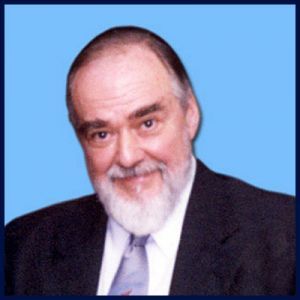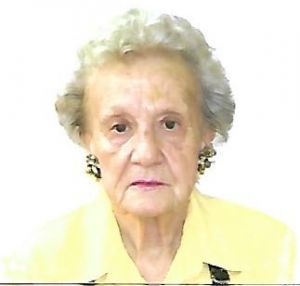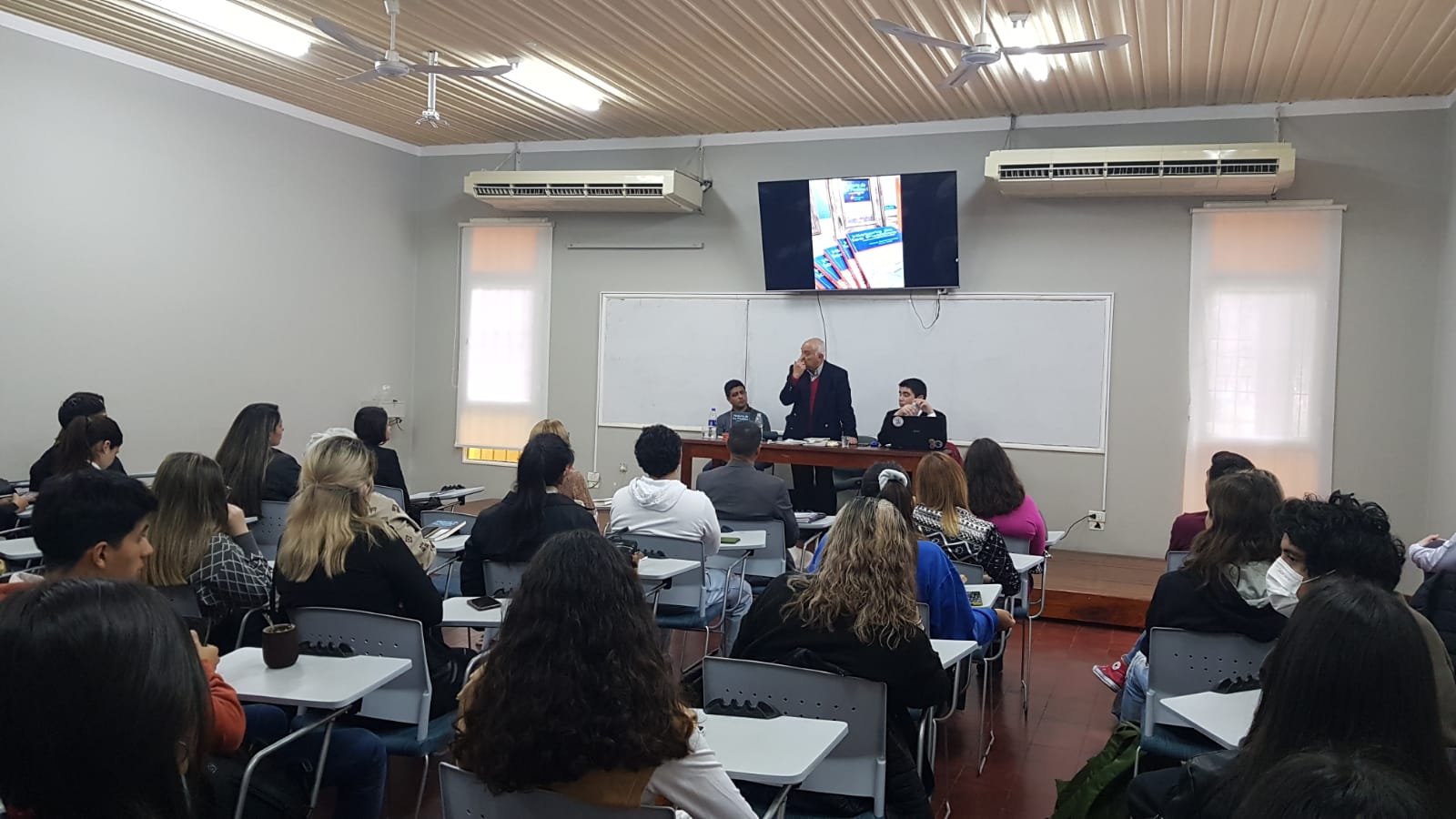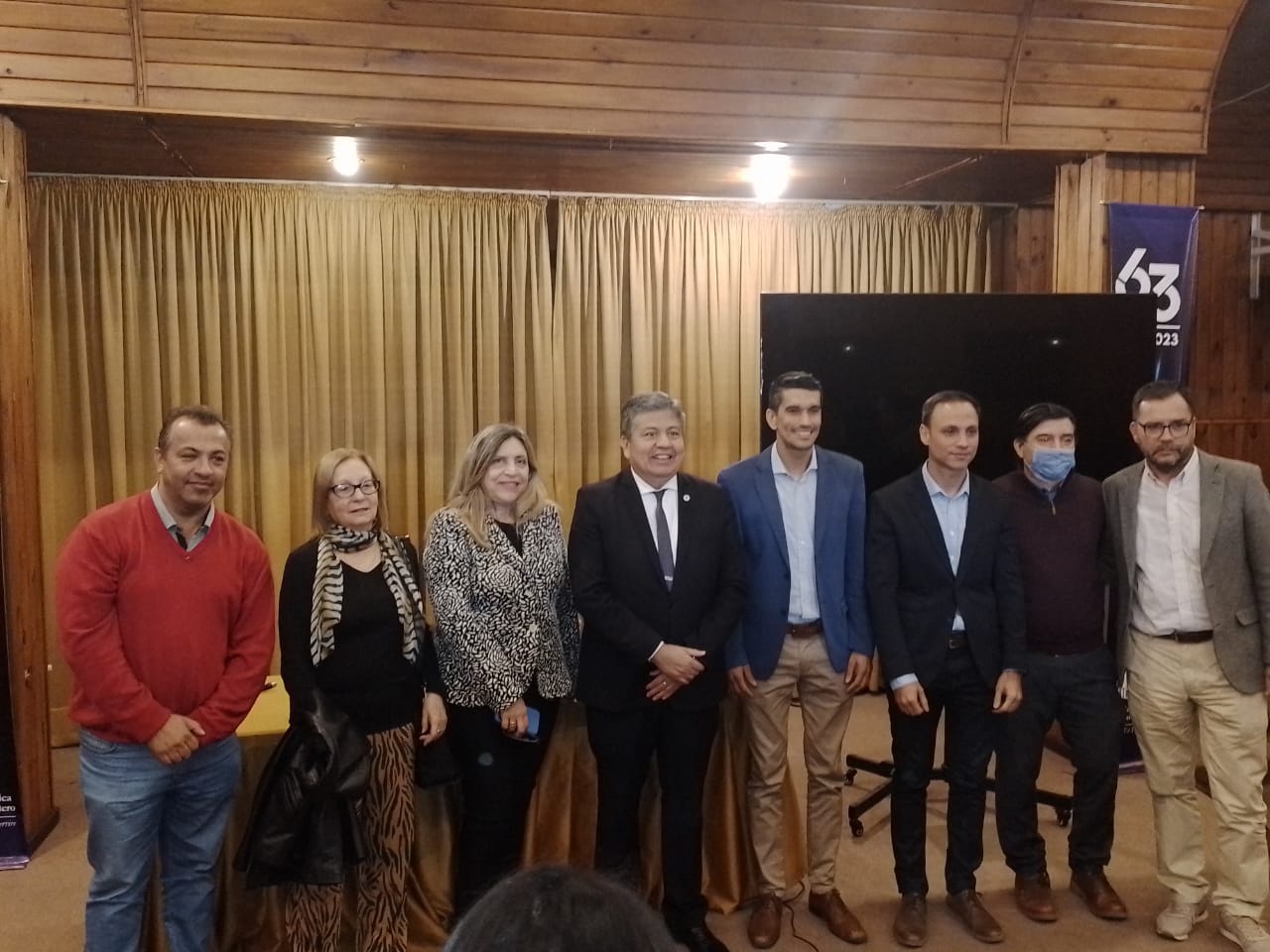General Manuel Belgrano y Santiago del Estero
By Antonio V. Castiglione
Note: The following paragraphs are transcriptions or excerpts from different books written by Dr. Antonio V. Castiglione, president of the Belgranian Institute of La Banda, Santiago del Estero, Argentina, in which he expressly refers to the connections the “Father of the Country” had to that Argentine province.
The Belgrano School
In November 1812, Santiago del Estero had the good fortune to receive the Dominican friar Juan
Grande. In October 1813, Lieutenant Governor Mariano Sarassa received a direct order from Manuel Belgrano to open the school for which he had donated funds to our city, and this order was immediately conveyed to the City Council. However, the defeats at Vilcapugio and Ayohuma delayed its opening.
On September 5, 1822, the City Council decided to create that school, establishing its operations in a room of Santo Domingo Convent under the direction of the teacher Pío Cabezón. On July 3, 1823, as Pío Cabezón could not take charge of the school for health reasons, it appointed Brother Juan Grande, providing him with an annual salary of one hundred pesos. Brother Juan Grande was already attending the school at Santo Domingo Convent.
That is how the Belgrano School began. It operated right next to the convent on what is now Urquiza Street.
This is the famous school about which so much has been written. The most recent thing we have read is that Argentine Senator Omar Vaquir asked for a new law to be passed and a school to be built since the one endowed by General Manuel Belgrano had never been created. The law was passed, and the school was built in Loreto.
Our research led us to a note from the City Council dated July 3, 1823, and signed by Sebastián de Palacio and Pedro J. Alcorta, addressed to Fray Juan and telling him: “As compensation for your service as a school teacher of the youth of this province, this body has resolved to allocate to you from the funds existing in Buenos Aires for the school donated by the Excelentísimo Señor Capitán General Don M. Belgrano, one hundred pesos annually, which you shall receive starting from this date, at the appropriate time. This payment shall be collected through a payment order from this City Council to the agent Don Félix I. Frías: we bring this to your attention for your information. May God keep you, Chapter House of Santiago del Estero, July 3, 1823.”
An old tradition said that in the old Normal School, which later became the School of Commerce (from the 1950s to the 1980s), then the School of Music (2009), located at 150, 24 de Septiembre Street. The classroom there was built with the funds bequeathed by Belgrano. Gargaro disagrees and says that it should be corrected. He teaches that on November 9, 1859, a decree of Governor Borges created the “9 de Julio” School for girls. In 1872, the provincial government, relying on national resources, created a “9 de Julio” High School for Girls. In 1875 the name was changed to “Colegio de Belgrano.” Based on that school, during Nicolás Avellaneda’s presidency, on August 25, 1880, the “Normal School for Teachers” was created, and in 1920 the name “Manuel Belgrano” was added. Gargaro ends by saying, “There is no reason of any kind to determine that the school he endowed, operating irregularly, evolved to become today’s “M. Belgrano” Normal School.
Source: (Castiglione, Antonio V.: “Historia de Santiago del Estero (1810/2010),” 2010, pp. 12/13).
Belgrano and San Martín in Santiago del Estero, May 25, 1814
The day of the two “Fathers of the Country” in the province: on May 25, 1814, an exceptional circumstance arose: Belgrano and San Martín were in our province, and curiously, both were in poor health. Belgrano was in Loreto, at the ranch of his Islas grandparents, while San Martín, the new leader of the Army of the North, was staying at the home of Pedro Carol, on 25 de Mayo Street at the corner of 9 de Julio. He was a distant relative of Belgrano.
Source: (Castiglione, Antonio V.: “Historia de Santiago del Estero (1810/2010),” 2010, p. 18).
Estancia “El Yugo”: The Estate of Belgrano’s Grandparents
Two kilometers from the town of Loreto was Estancia “El Yugo,” residence of the González Islas family, the maternal grandparents of General Manuel Belgrano. This soldier and lawyer spent his leisure time there and liked to go hunting. Around 1819 it had a population of 3,903.
Source: (Castiglione, Antonio V.: “Historia de Santiago del Estero (1810/2010),” pp. 26/27).
Belgrano Appoints Ibarra as Commander of Fort Abipones
On August 30, 1817, General Belgrano conferred on him the rank of Captain and appointed Juan Felipe Ibarra as commandant general of the frontier of Santiago del Estero, based at Fort Abipones. In 1820, from there, he went up to Santiago and wrested control of the province from Tucumán.
Belgrano appreciated Ibarra for his steadfastness and courage. He entrusted him with the training of 200 recruits from Santiago del Estero. He familiarly called him “Saladino Ibarrita.” Source: (Castiglione, Antonio V.: “Historia de Santiago del Estero (1810/2010),” p. 28).
Traveling the Camino Real through Santiago del Estero
Everyone traveling north from Buenos Aires and Córdoba had no choice but to travel this road, as it was the only connection to Córdoba. Among those who crossed this road were Viceroy Nicolás Arredondo (1789), María Antonia de la Paz y Figueroa (Mama Antula, 1776), General Manuel Belgrano, Balcarce, Castelli, Chiclana, Ortiz de Ocampo, Vieytes, Rondeau, Dorrego, Paz, Paso, Iramaín, Borges, and Ibarra.
Source: (Castiglione, Antonio V.: “Historia de Santiago del Estero (1810/2010),” p. 29).
When Borges’s Uprising Was Subdued
On December 10, 1816, Belgrano sent Aráoz de La Madrid with troops of the Army of the North to subdue the autonomist movement in Santiago del Estero. He defeated Borges at Pitambalá and ordered his execution by firing squad on January 1.
Source: (Castiglione, Antonio V.: “Historia de Santiago del Estero (1810/2010),” p. 37).
Belgrano Sanctions Güemes and Sends Him to Buenos Aires
On November 10, 1812, General Belgrano sanctioned Lieutenant Colonel Güemes for misconduct and ordered him to travel immediately to Buenos Aires to appear before the Provincial Government and that Juana Inguanzo be returned to her husband, Lieutenant Mella.
To this effect, Belgrano sent an official letter to the mayor of Santiago del Estero, Germán Lugones, asking him to provide Señora Inguanzo with the aid necessary to comply with the order, all to maintain order, respect for religion, and “the credit to our cause, which has suffered excessively because of the leniency of some Chiefs and Magistrates about this type of crime.”
Source: (Castiglione, Antonio V.: “Historia de Santiago del Estero (1810/2010),” p. 40).
San Martín and Belgrano, Both in Santiago del Estero
During his trip from Tucumán to Córdoba in January 1813, San Martín stopped for three days in Santiago del Estero, where he found a letter from General Belgrano sent from Loreto. In the missive, Belgrano expressed his regret for his ailments, recommending him to his relatives Pedro Carol and presbyter Pedro F. de Uriarte, for assistance. A descendent of the Carol family told us that San Martín stayed at the home of Pedro Carol’s family on 25 de Mayo and 9 de Julio streets.
In turn, while in Santiago del Estero, San Martín wrote a letter to Belgrano warning him: “You must be aware that you have enemies and that they, as well as other good for nothings, delight in criticizing everything you do, even the most trivial matters.”
Source: (Castiglione, Antonio V.: “Historia de Santiago del Estero (1810/2010),” p. 41).
The Struggle of Santiago del Estero for Provincial Autonomy
On August 28, 1816, Belgrano proposed to Congress that Sargent Major Gabino Ibáñez be appointed Lieutenant Governor. He took office on August 30 and informed Belgrano of the political chaos in the province. The general immediately forwarded this communication to Congress, which dealt with it in a secret meeting.
Borges returned from Salta and again incited a rebellion among the people of Santiago del
Estero, gathering many followers. He prepared a second separatist revolution, which broke out on December 10, 1816. In it, he captured and overthrew Lieutenant Governor Ibáñez, who was sent as a prisoner to Loreto, after which he proclaimed Lieutenant Governor again. After that, he went to the province’s interior to recruit militias.
Bernabé Aráoz, later appointed “President of the Sovereign and Independent Republic of Tucumán,” maliciously told General Belgrano that Borges had incited an uprising against the country’s military, that, in concert with the Uruguayan Artigas, he was not going to obey Congress, and that they would not pay taxes and would stir up the peasant militias.
Thus, believing that Borges was rising against him and his army and that his movement was connected with the royalists in Alto Perú, Belgrano ordered Colonel Bustos (with his 2nd Regiment), Colonel José M. Paz (with his squadron of dragoons), and Major Aráoz de La Madrid to search for Borges and to track him down and arrest him. He sent 200 infantrymen, 50 dragoons, and two artillery pieces to quell the uprising.
As A. Gargaro explains, in this way, by ordering his execution, Belgrano was merely complying with an order from Congress.
In the session of the Tucumán Congress held on January 1, 1817, a communiqué was read that was sent to it by General Belgrano, informing it that “the legion sent to Santiago del Estero to restore order under the command of Aráoz de La Madrid completely defeated the insurgent Borges and a group of men he was able to entice, on the 26th of last month. This man has worked relentlessly to bring this disastrous end upon himself and succeeded. I hope this will serve as a lesson to others of the same type.”
Borges was shot without trial or defense on January 1, 1817. Today his remains rest in the cathedral.
Time and events demonstrated to Belgrano that he was wrong in thinking that the sole objective of Borges’ movement was provincial autonomy.
This document proves that the members of the Tucumán Congress held fast in the decision to have Borges shot and that La Madrid complied with an order from General Belgrano.
Borges paid with his life for the separatist attempts in Santiago del Estero. With him, Santiago del Estero lost the forerunner and apostle of the interior revolution. He could have been a hero of more significant proportions, but his tragic death ruined his brilliant career and deprived Santiago del Estero of a leader.
Source: (Castiglione, Antonio V.: “Historia de Santiago del Estero (1810/2010),” p. 46/47)
Belgrano’s Opinion of Borges
These are some of Belgrano’s opinions, which we have taken from his correspondence.
- “The disruption in Córdoba ended, and, on the night of the 10th, it began in Santiago del Estero. The Lieutenant Governor was captured and holding him in Loreto for reasons and factors I am unaware of” (letter from Belgrano to Manuel de Ulloa, dated December 16, 1816).
- “If Borges hadn’t disrupted things for me, we would have already accomplished our aims (regarding the royalists). We should soon have 8,000 cartridges; I don’t know how we’re doing with mules with all the mischief going on in Santiago … Borges was taken prisoner and has paid for his crimes; they tell Lugones may be headed to Salado to cross over to the enemy. It was essential that you give the order to be on the lookout to seize him; Goncebat and Montenegro have headed down and will go and increase the numbers of the bandits in Santa Fe who have left and stolen 300 guns. And do we still have these agitators among us whose ideas are pure theory?” (Letter from Belgrano to Güemes, dated January 3, 1817).
- “Lugones and Goncebat appeared and begged my forgiveness, which I granted. The former was led astray by my good relative Borges, may God have mercy on him, and the latter was induced by fear.” (Letter from Belgrano to Güemes, dated January 10, 1817).
Source: (Castiglione, Antonio V.: “Historia de Santiago del Estero (1810/2010),” p. 49/50).
Belgrano and His Mother’s Family from Santiago del Estero
Manuel José Joaquín del Corazón de Jesús Belgrano was born in Buenos Aires on June 3, 1770.
He was the son of Domingo Francisco Belgrano y Peri and María Josefa González Casero, who was from Santiago. His father was an Italian immigrant from Oneglia on the Ligurian Coast. He first settled in Cádiz, Spain, and later in Buenos Aires, where he went into business. They married on November 4, 1757, at Iglesia de La Merced (Our Lady of Mercy Church) in Buenos Aires.
His mother’s family and relatives from Santiago del Estero: His maternal great-grandmother was Doña Lucía de Islas y Alva Bravo de Zamora (b. 1693), from Loreto, Santiago del Estero. She married Juan Guillermo (or Juan Alonso) González, from Cádiz, and they had four children.
They owned an estate called “El Yugo,” close to Loreto. His maternal grandfather was Juan Manuel González Islas, a native of Loreto (b. 1715). He married María Inés Casero Ramírez, and they had two children.
One of them was Belgrano’s mother, María Josefa González Casero, who married Domingo F. Belgrano de Buenos Aires.
Given that there were no relatives of the Belgrano family in the Viceroyalty, the only family members our General had in this land were on his mother’s side. These include Juan José Castelli (his second cousin), Juan Francisco Borges Urrejola (fourth cousin), Juan Felipe Ibarra, and the brothers Manuel and Antonino Taboada, more distant cousins (Bravo de Zamora, 2020:32,37,57,99; Castiglione, 2010:345; 2012:346, note 440; 2012:391, note 502; and Figueroa, 1927:78).
Juan José Castelli was the grandson of Gregoria González Islas, sister of Belgrano’s grandfather, Juan Manuel González Islas.
Juan Francisco Borges also descended from the marriage between Catalina Bravo de Zamora and Francisco de Alva (the common great-great-grandparents of Belgrano, Castelli, and Borges). His daughter Juliana Alva y Bravo de Zamora married José de Islas in 1682, and they are the common greatgrandparents of Belgrano and Castelli).
Juan Felipe Ibarra is descended from Juan Bravo de Zamora y Vélez de Alcócer (b. 1630), whose great-grandson Francisco Javier de Ibarra y Bravo de Zamora married Ana de Jerez y Calderón. They had Felipe Matías de Ibarra, who in 1752 married María Antonia de Paz y Figueroa (niece of the beatified religious sister of the same name). In 1787, they had the [future] governor of Santiago del Estero, [Juan Felipe Ibarra]. Ibarra was under Belgrano’s orders in the Army of the North, participating in the battles of Las Piedras (where he was promoted to lieutenant), Tucumán, and Salta (where he was promoted to captain), and in 1816, as aide-de-camp to the general staff. On August 16, 1817, the General appointed him commandant general of the line of outposts along the Salado River, based in Abipones.
The Taboada brothers: a sister of J. F. Ibarra, Doña Águeda Ibarra y Paz y Figueroa, married Leandro Taboada, and they were the parents of Manuel Taboada (governor, b. 1817), Antonino Taboada (general, b. 1814), Gaspar Taboada (businessman), Felipe Taboada (artist, b. 1821) and others.
Source: Castiglione, Antonio V.: “Belgrano,” 2022, pp. 19/29.
Belgrano and the Sending of Royalist Officers to Santiago del Estero
After the victories of Tucumán (1912) and Salta (1813), Belgrano had many royalist officials arrested in Tucumán. So he decided to send them to be held in other provinces.
He sent the following documents regarding the treatment of those sent to Santiago del Estero:
a.- From the National Belgranian Institute, we take this document from Belgrano:
Place and date: Tucumán, October 13, 1812.
To the Lieutenant Governor, Lorenzo Goncebat.
Ref.: “I am sending another group of officer prisoners to the city of Santiago del Estero.”
These were the instructions to the commander from Santiago del Estero and to Antonio Bazán, expressly telling them to take measures to ensure they had food, a place to stop, and that no one insulted them, but that they should be treated all along the way (the Camino Real). And that if, for some reason, these officers “did not conduct themselves as their honor prescribes, you should take any measures prudence calls for to command respect, even force.”
- From the Provincial Historical Archive (Dossier 5, no. 62), we take this other one: Resolution of Lieutenant Governor Gabino Ibáñez, dated March 6, 1819.
“Insofar as it is necessary to take precautions in these circumstances, care must be taken to ensure the safety of the Europeans turned over to this Jurisdiction by the Provincial Government, mainly because, if Pedro Cathedra [for example] were sent before a firing squad as if he had committed a murder, there would be immediate consequences. I determined that they be kept in custody until further orders. Therefore, I must now order that they provide bonds guaranteeing their good behavior and that the guarantors will present the prisoners before this Authority immediately, within three hours of being summoned. I order that they be released after they give these bonds, accepting responsibility for the monetary penalty imposed on them by their bond in the event they verify it, of which they will be notified. I, the Lieutenant mentioned above, Governor of Santiago del Estero, so rule, order, and sign on the sixth day of March of 1819, with witnesses in the absence of a notary. Don Gabino Ibáñez, Mariano Eduardo de Torres.”
The names of the Spaniards held in Santiago del Estero are listed at the bottom: Manuel Álvarez, Ignacio Fernández, Pedro Prieto, José Antonio García, Marcos Carrillo, José V. Marcos, José Ventura Torres, Pedro Cobacho, and Antonio Suárez.
The following persons served as guarantors: for Fernández, Santiago de Palacio; for Álvarez, Father Felipe Ferrando; for Pedro Cobacho, Pedro Prieto; for Marcos Carrillo, Juan Manuel Iramaín; for
José V. Marcos, the vicar Manuel Frías; and for Antonio Suárez, Sebastián de Palacio (Figueroa, 1927:37). The bond of the guarantors named was set at two hundred pesos.
General Belgrano ordered these prisoners held in our province for being “dangerous because they are persons of importance.” They are the founders of families with the same surnames. As we have said, our family descends from the first of these through the maternal lines. And the famous Dr. Ramón Carrillo, the first Health Minister of Juan Perón’s administration, is a descendent of Marcos Carrillo (Castiglione, 2020:24; Castiglione, 2021:129; Figueroa, 1927:37). Source: Castiglione, Antonio V.: “Belgrano,” 2022, pp. 82/84).
A Genealogical Study of Manuel Belgrano (his Santiago del Estero family)
Alberto Bravo de Zamora, a researcher from Santiago del Estero, published an interesting genealogical study that, together with family data we have from other authors, clarifies suspicions we had that General Belgrano and the author of this paper share a common ancestor many generations back, in about the 17th century. (Bravo de Zamora, 2020:32,37; Castiglione, 2012:346, note 440). Even with what we mentioned previously in Chapter 3 about his family and relatives, we add that Don Lope Bravo de Zamora was born around 1560 in Seville, Spain. He came to South America and settled in Tucumán in 1580. Governor Gerónimo L. de Cabrera granted him an encomienda over the Indians of Mamblache, and in 1582 he settled in Santiago del Estero. In 1606 he married María Bohórquez, with whom he had eight children. He was a prominent person of his time.
His son, named after him, Lope Bravo de Zamora y Bohórquez (b. 1606), married Doña Isabel Vélez de Alcocer. Five children were born in that marriage. The oldest was Juan Bravo de Zamora y Vélez de Alcócer (b. 1630), and the second was Catalina Bravo de Zamora y Vélez de Alcócer (b. 1634).
The “Belgrano” branch: Doña Catalina Bravo de Zamora y Alcocer (b. 1634) married Francisco de Alva, a Spanish gentleman who held important positions in Santiago del Estero. That marriage produced
Juliana de Alva y Bravo de Zamora, who, in turn, married Don José de Islas. In 1713, in Santiago del Estero, their daughter, Doña Lucía de Islas y Bravo de Zamora, married Don Juan Alonso or Juan Guillermo González, from Cádiz, Spain. They had two children: Gregoria González Islas, the grandmother of Juan José Castelli, and Juan Manuel González, who was Belgrano’s grandfather since he married María Inés Casero Ramírez. Their daughter, María Josefa González Casero (b. 1743), married Domingo F. Belgrano on November 4, 1757, and they were the parents of Manuel Belgrano (Alén Lascano, Bravo de Zamora, 2020:47).
Source: Castiglione, Antonio V.: “Belgrano,” 2022, pp. 85/86).
General Belgrano and Medicine in Santiago del Estero:
We wish to inform people of a little-known circumstance in Santiago del Estero. In 1813, after the battles of Tucumán and Salta, in which the patriot army led by General Manuel Belgrano defeated the royalist troops of General Pío Tristán, many Spanish officers and soldiers were taken prisoner.
Belgrano did not want so many Spanish soldiers in San Miguel de Tucumán, so he arranged to hold them in all the northern cities.
The royalist prisoners assigned to Santiago del Estero were: Manuel Álvarez, Marcos Carrillo, Pedro Cobacho, Ignacio Fernández, José A. García, Pedro Prieto, José Vicente Marcos, Antonio Suárez, and José Ventura Torres (Castiglione, 2010:345).
Each was assigned a “guarantor,” someone responsible for their conduct. Father Felipe Ferrando was responsible for the good behavior of officers Álvarez, Cobacho, Prieto, and García; Marcos Carrillo was responsible for Juan M. Iramaín; and Father Manuel de Frías was responsible for Marcos and Torres.
Over time, their supervision or guardianship was lifted, and they all started their own families, marrying criollas.
Manuel Álvarez was the grandfather of Dr. Antenor Álvarez, Marcos Carrillo was the grandfather of Dr. Ramón Carrillo, and José V. Marcos was the grandfather of Dr. Pedro Tomás Marcos.
Without intending to, our “Father of the Country” sent our province the ancestors of three people who, years later, would become outstanding medical professionals in Santiago de Estero. Source: (Castiglione, Antonio V.: “Historia de la Medicina en Santiago del Estero,” 2021, p. 129).




